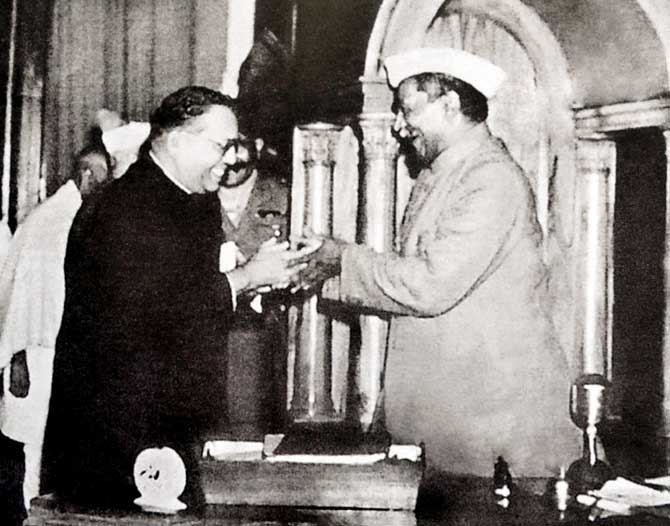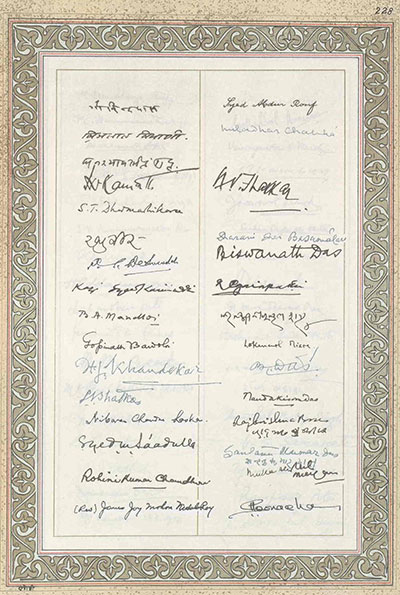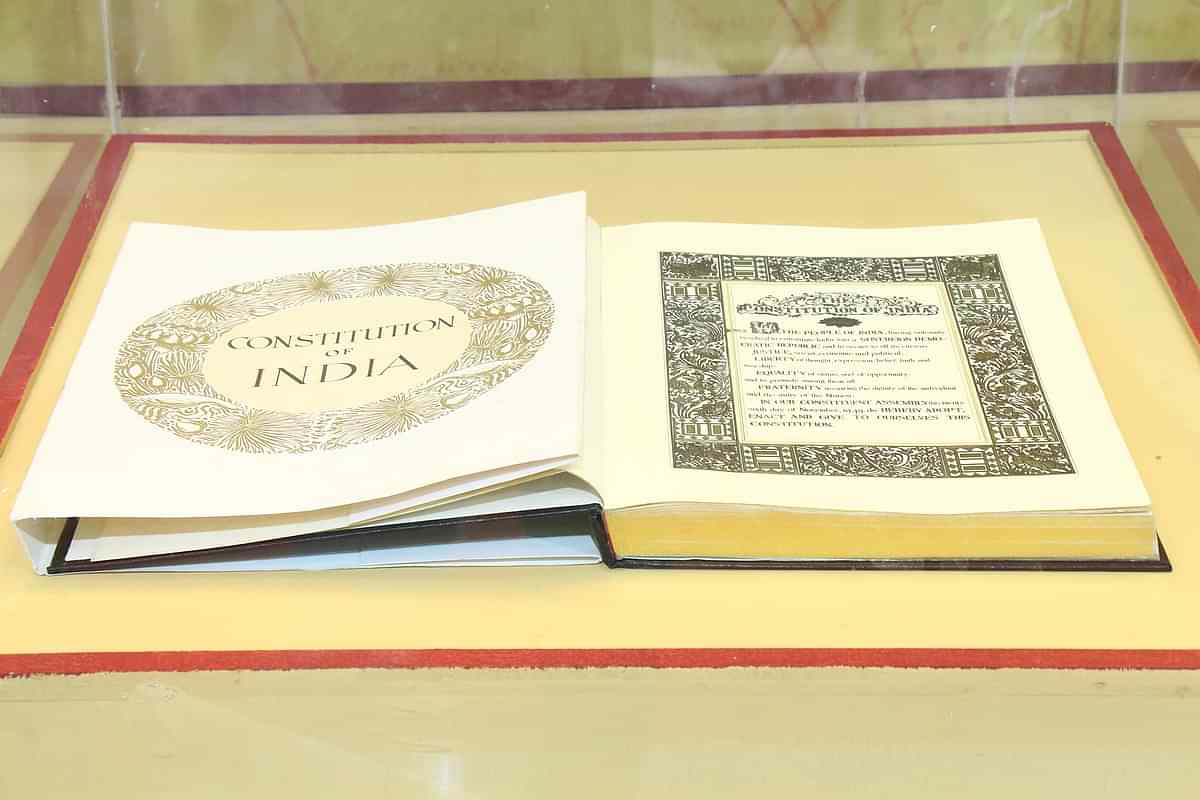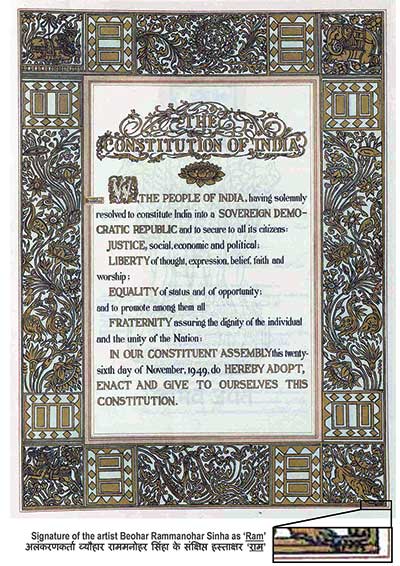Creation of any new nation starts with the identification of geographical boundaries and people within these boundaries. However, a state is considered full-fledged and sovereign only when it has its own Constitution. Constitution is the basic law of the land. It answers some fundamental questions related to the course of social, political and economic dimensions of the nation-state.
Choices are made whether the country would be a monarchy or a democracy. Whether there would be any state religion? What would be the economic structure of the country? What would be the role and overlaps of all the three pillars of the government- legislature, executive and judiciary? What would be the administrative structure of the country-federal or unitary or both? Would there be single citizenship or dual citizenship? And the list goes on and on…
It is certainly not easy to answer the above questions. Thus the Constitution of India has a long and interesting history behind its making. While you may be aware of some general facts, there are some interesting facts about the Indian Constitution which are not commonly known by most Indians.
Fact 1: First Initial draft of the Constitution was prepared by Sir B.N. Rau
Sir. B.N. Rau who was a distinguished Indian Civil Servant and Jurist became Constitutional Advisor to the Assembly. The general structure of the democratic framework of the Indian Constitution was initially prepared by Dr. B. N. Rau. Thus when the drafting committee was set up under the chairmanship of Dr. B.R. Ambedkar in 1949, it already had the first draft of our Constitution.
A day before the Constitution was adopted, Dr. Ambedkar himself acknowledged in his concluding speech that Dr. B. N. Rau should be given all the credit for preparing the initial draft of the Constitution.
Fact 2: It took nearly three years to draft the Constitution
The British government sent a Cabinet Mission for discussion on execution of transfer of power in 1946. It was this Cabinet Mission under whose guidance the Constituent Assembly was elected to write the Constitution of India. The first session of the Constituent Assembly was held on 09th December 1946. It was adopted by the Constituent Assembly of India on 26th November 1949 and came into force on 26th January 1950 to mark the 20th Anniversary of demand of Poorna Swaraj or Complete Independence. In total, it took our country’s founding fathers and mothers precisely 2 years 11 months and 18 days to draft the Constitution.

Babasaheb Bhimrao Ambedkar presenting final draft of Indian Constitution to Dr. Rajendra Prasad on 25 November, 1949.
Fact 3: The First Chairperson of the Constituent Assembly was Dr. Sachchidananda Sinha
When the Constituent Assembly met for the first time, senior-most member of the Assembly, Dr. Sachchidananda Sinha served as its first chairman. He served temporarily only for two days after which Dr. Rajendra Prasad was formally elected as the chairman of the Assembly.
Fact 4: The Original Constitution is handwritten and each page beautifully designed.
The original final manuscript of Indian Constitution was hand-written by Prem Bihari Narain Raizada. Each page including the Preamble-page of the Constitution’s original manuscript was decorated with beautiful illustrations by Beohar Rammanohar Sinha and Nandalal Bose. Rammanohar was a pupil of Nandalal Bose. The illustrations drawn represent styles from the different civilizations of the subcontinent, ranging from the prehistoric Mohenjodaro, in the Indus Valley, to the present.
Two original copies, one in Hindi and one in English, of the India’s Constitution were signed by 284 members of the Constituent Assembly.

Fact 5: Original Copies of the Constitution is in Parliamentary Library
The original copy of the Indian Constitution is kept in a special helium-filled case in the Library of the Parliament of India. It took nearly five years to produce it. The original copy is signed by the framers of the constitution, most of whom are regarded as the founders of the Republic of India.

Fact 6: Hindi translation of the draft Constitution made some prominent leaders Uncomfortable!
Jyotindra Das Gupta in his book “Language Conflict and National Development” mentions that Dr. Raghuvira was given the responsibility to translate the Constitution in the Hindi language. However, when the Hindi draft was prepared, Nehru and some other leaders were not happy with the translation. They complained that the Hindi translation was highly Sanskritized and that they were unable to understand the Hindi version despite being Hindi speakers.
Fact 7: Right to Vote is not a fundamental right!
Right to vote is a fundamental right in many countries. However, this is not the same in case of India. Right to vote is not explicitly included in part III of the Indian Constitution which deals with fundamental rights. The Right to Vote is a statutory right which derives its source from the Representation of People Act, 1951. Though indirectly it is often connected with Article 19 (1) (a) [Freedom of speech and expressions] and Article 21 [Right to life and personal liberty] of the Constitution-both of which are fundamental rights.
Fact 8: MN Roy proposed the idea of a Constitution
The idea of the Constitution was first proposed by Manabendra Nath Roy who was a noted philosopher, radical activist and political theorist, and an Indian revolutionary.
Fact 9: Preamble is inspired by Objective Resolution drafted by Nehru
Preamble is the introductory statement which sets out the principles on which our Constitution is based. Our Preamble is based on the objective resolution drafted by Jawahar Lal Nehru in 1946. The structure of the Preamble was inspired by the United Nations Charter as both start with “WE THE PEOPLE”.

Fact 10: Original Constitution had 395 Articles, 8 Schedules and 22 Parts
On 24th January 1950, when the original Constitution was being signed, it consisted of 395 Articles, 8 Schedules, and 22 Parts. The Constitution in its current state has 448 Articles, 12 Schedules, and 25 Parts.
Fact 11: The original Constitution has been amended for more than a hundred times!
Oh yes! You might be surprised to know that as in January 2020, 104 Amendments have been made to the original Constitution of India. One of the most famous recent Amendment was the one introducing Goods and Services Tax (GST). The Amendment introducing GST was the 101st Constitutional Amendment Act.
Fact 12: 42nd Constitutional Amendment Act is known as the Mini-Constitution
The Constitutional (Forty-Second Amendment) Act, 1976 was enacted during Prime Minister Indira Gandhi’s emergency regime. It brought about the most widespread changes to the Constitution and is regarded as the most controversial constitutional amendment in the Indian history. The Amendment Act attempted to reduce to the power of Judiciary to adjudicate upon the constitutional validity of laws. Due to the significant changes this Amendment brought along, it was started being called the “mini-Constitution”.
Fact 13: It is not the longest Constitution ever written
Most of us believe that the Indian Constitution is the longest written Constitution ever. Well, if you are referring only to the nations of the world, then the answer is yes. However, it is Alabama’s Constitution which is longest in the World. The Constitution of Alabama consists of 310,296 words. As Alabama is a state in the United States and not a country, its Constitution is not counted when we are referring to the Constitution of the sovereign nations. So next time, when you refer to the Constitution of India as the longest Constitution in the World, please qualify your statement by adding four more words- “for any sovereign nation”!
Fact 14: Preamble has been amended only once
The Preamble of our Constitution has only been amended once in the year 1976 by virtue of 42nd Constitutional Amendment Act, 1976. The terms Socialist, Secular and Integrity” were added in the Preamble through the Amendment. Prior to amended, the state was described as “Sovereign Democratic Republic”. Post to the Amendment, it became “Sovereign Socialist Secular Democratic Republic”.
Fact 15: Right to Property was initially a fundamental right
Right to Property was initially a fundamental right under Article 31 of the Constitution. Later with the enacted of 44th Constitutional Amendment, it was shifted from fundamental rights to Article 300 A. This helped the government to acquire property for public interest and welfare without being dragged to court each time for violation of any fundamental right.
Use the citation below to add this article to your bibliography
"Indian Constitution: Some Interesting Facts." Dashamlav.com. Web. 13 June 2025. <https://dashamlav.com/constitution-india-interesting-facts/>
Dashamlav.com, "Indian Constitution: Some Interesting Facts." Accessed 13 June 2025. https://dashamlav.com/constitution-india-interesting-facts/
"Indian Constitution: Some Interesting Facts." (n.d.). Dashamlav.com. Retrieved 13 June 2025 from https://dashamlav.com/constitution-india-interesting-facts/
